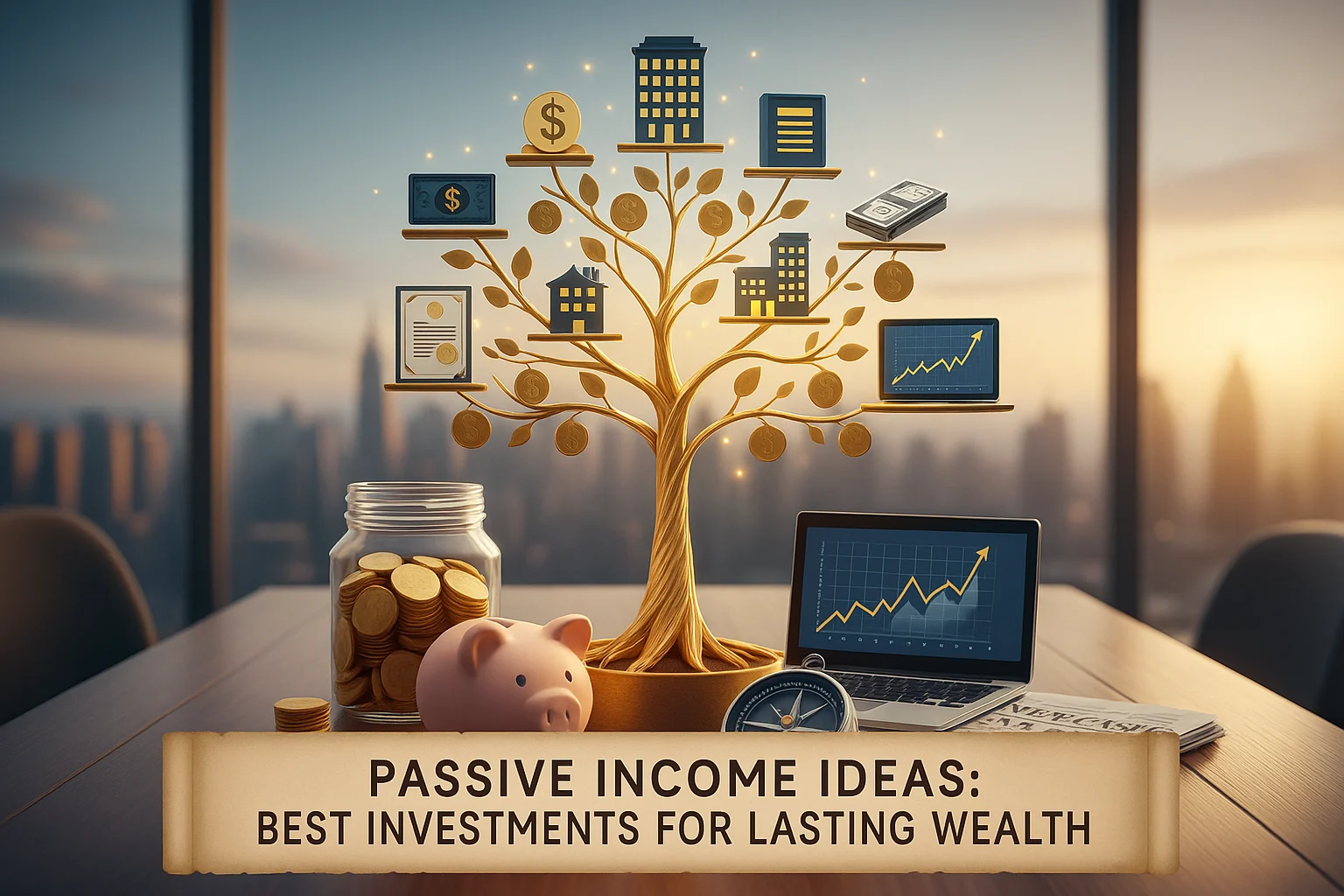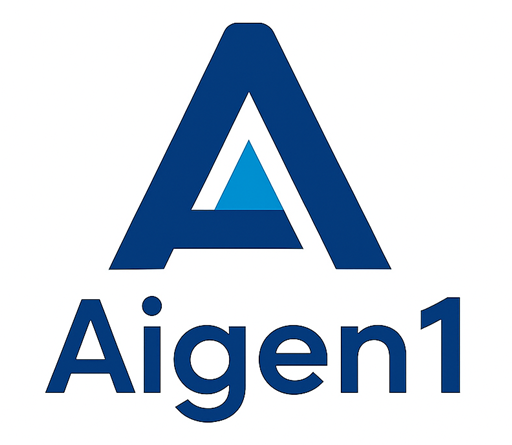Building wealth without constant effort is a dream for many, and passive income ideas make it possible. In 2026, with markets projected to grow 8-12% (S&P 500), smart investments can generate steady income. For instance, dividend stocks, real estate, and ETFs offer low-maintenance returns. However, choosing the right strategy requires understanding market trends and risks. Moreover, AI-driven tools will simplify investment decisions by 2026, providing real-time insights. Therefore, this guide explores top passive income strategies, tailored for beginners and seasoned investors alike, to help you achieve lasting wealth. Additionally, we’ll cover practical steps and tools to start today. Transitioning to passive income isn’t instant, but with discipline, it’s achievable. Consequently, let’s dive into the best investments for 2026 to secure your financial future.
Table of Contents

Why Passive Income Matters in 2026
Passive Income Ideas: Financial Freedom
Passive income lets you earn without active work, freeing time for other pursuits. In 2026, with inflation and interest rates fluctuating, residual income strategies are vital. For example, investments like dividend stocks or rental properties provide steady cash flow. Moreover, AI advancements will make managing these investments easier. However, risks like market volatility require careful planning. Therefore, diversifying across asset classes is key. Additionally, passive income aligns with long-term goals like retirement. For instance, your Smart Retirement Investment Planning 2026 guide highlights diversification. Consequently, starting small with accessible investments builds wealth over time. Transitioning to passive income requires learning, but the payoff is worth it.

Dividend Stocks for Passive Income
Residual Income Strategies: Dividend Stocks
Dividend stocks pay regular dividends, ideal for passive income. In 2026, companies with strong fundamentals will offer reliable payouts. For instance, blue-chip stocks like those in the S&P 500 yield 2-4%. Moreover, learning to read stock charts, as detailed in our How to Read Stock Charts in 2026 guide, helps identify dividend trends. However, high yields can signal risk. Therefore, focus on dividend aristocrats—companies with consistent increases. Additionally, reinvesting dividends compounds wealth. Consequently, start with a brokerage offering low fees. Transitioning to a dividend-focused portfolio is simple with research, ensuring steady income.
Choosing the Right Dividend Stocks
Not all dividend stocks are equal. Therefore, prioritize those with low debt and stable earnings. For example, sectors like utilities or consumer goods often provide reliable dividends. Moreover, in 2026, AI tools will flag undervalued stocks. However, avoid chasing high yields without checking fundamentals. Additionally, diversify across industries to reduce risk. For instance, combining tech and healthcare stocks balances growth and stability. Consequently, use platforms like TradingView for analysis. Transitioning to informed stock picks enhances passive income potential.
Real Estate Investments
Passive Income Ideas: Rental Properties
Rental properties generate steady income through rent payments. In 2026, urban markets may offer 5-8% returns. However, property management can be active unless outsourced. Therefore, hiring a management company makes it passive. For example, platforms like Roofstock simplify buying rental properties. Moreover, real estate crowdfunding lowers entry barriers. Additionally, tax benefits like depreciation enhance returns. Consequently, research local markets for high-demand areas. Transitioning to real estate builds wealth with minimal daily effort.
REITs for Simplified Real Estate Income
Real Estate Investment Trusts (REITs) offer passive income without owning property. For instance, REITs pay 90% of taxable income as dividends. In 2026, commercial REITs may thrive post-recovery. However, interest rate hikes could impact yields. Therefore, choose REITs with diversified portfolios. Moreover, platforms like Vanguard offer low-cost REIT ETFs. Additionally, they require less capital than physical properties. Consequently, REITs are ideal for beginners seeking residual income strategies.

ETFs and Index Funds
Residual Income Strategies: ETFs
ETFs and index funds provide diversified, low-maintenance income. For example, S&P 500 ETFs yield steady returns with minimal fees. In 2026, with 8% market growth projected, ETFs are a safe bet. Moreover, dividend-focused ETFs enhance cash flow. However, expense ratios matter. Therefore, choose funds with fees below 0.2%. Additionally, automate investments via robo-advisors. Consequently, ETFs simplify wealth-building. Transitioning to these funds suits busy investors seeking passive income.
Benefits of Index Funds
Index funds track markets, offering stability. For instance, a total market fund diversifies across thousands of stocks. Moreover, in 2026, AI-driven ETFs will optimize allocations. However, returns may lag active strategies. Therefore, balance with high-yield assets like REITs. Additionally, low costs make index funds attractive. Consequently, they’re ideal for long-term passive income ideas. Transitioning to index funds ensures steady growth with minimal effort.
Bonds and Fixed-Income Assets
Passive Income Ideas: Bonds
Bonds provide predictable income through interest payments. In 2026, with potential rate cuts, bond yields may stabilize at 3-5%. For example, municipal bonds offer tax-free income. However, rising rates could lower bond prices. Therefore, focus on short-term or inflation-protected bonds. Moreover, bond ETFs simplify access. Additionally, our Best Ways to Invest in Gold 2026 guide explores bond options. Consequently, bonds suit risk-averse investors. Transitioning to bonds ensures stable passive income.
Peer-to-Peer Lending
Peer-to-peer (P2P) lending platforms like LendingClub offer 5-7% returns. For instance, you fund loans and earn interest. However, defaults are a risk. Therefore, diversify across many loans. Moreover, in 2026, AI will assess borrower creditworthiness. Additionally, P2P is accessible with low capital. Consequently, it’s a viable residual income strategy for beginners. Transitioning to P2P lending boosts income diversity.
Tools and Trends for 2026
Passive Income Ideas: AI Tools
AI will revolutionize passive income in 2026. For example, robo-advisors like Wealthfront automate ETF and bond investments. Moreover, AI-driven platforms predict market trends. However, over-reliance on tech can be risky. Therefore, combine AI insights with manual research, like stock chart analysis. Additionally, real-time data feeds enhance decision-making. Consequently, tools like TradingView are essential. Transitioning to AI-powered investing saves time and boosts returns.
Market Trends to Watch
In 2026, markets will broaden beyond tech, with 12.1% earnings growth. For instance, healthcare and energy sectors may offer new passive income opportunities. However, volatility from geopolitical events persists. Therefore, hedge with assets like gold, as noted in our gold investment guide. Moreover, rate cuts could boost REITs. Additionally, crypto staking may emerge as a passive income stream. Consequently, stay diversified and informed.
Tips for Maximizing Passive Income
Residual Income Strategies: Diversification
Diversify across stocks, real estate, and bonds to reduce risk. For example, combine dividend ETFs with REITs. Moreover, in 2026, AI tools will suggest optimal allocations. However, avoid over-diversification, which dilutes returns. Therefore, limit to 5-7 asset types. Additionally, reinvest earnings for compounding. Consequently, diversification ensures stable passive income. Transitioning to a balanced portfolio is key for lasting wealth.
Risk Management
Passive income isn’t risk-free. For instance, stock market dips affect dividends. Therefore, use stop-losses and monitor charts, as in our stock charts guide. Moreover, insurance products can protect wealth, per our Life Insurance in 2025-26 Guide. However, avoid high-risk assets without research. Additionally, journal your investments. Consequently, risk management secures long-term income.
FAQ: Passive Income Ideas for 2026
What are the best passive income ideas for 2026?
Dividend stocks, REITs, ETFs, bonds, and P2P lending are top choices. Diversify for stability.
How much money do I need to start?
You can start with $500 for ETFs or P2P lending. However, real estate may require more.
Are passive income investments safe?
No investment is risk-free. Therefore, diversify and use risk management tools.
How does AI help with passive income?
AI tools like robo-advisors optimize portfolios and predict trends, saving time.
Can beginners build passive income?
Yes, start with low-cost ETFs or REITs. Additionally, learn basics like stock chart analysis.
What’s the role of real estate in passive income?
Rental properties and REITs offer steady income with minimal effort if managed well.
How to avoid passive income mistakes?
Research thoroughly, avoid high-risk assets, and diversify. Moreover, consult advisors.
For more insights, explore Investopedia’s guide on passive income.
This article shares general ideas about passive income and investment strategies for building wealth in 2026. It’s not meant to be financial, investment, or legal advice. Every investment—whether it’s stocks, real estate, or bonds—comes with risks, including the chance of losing money. What worked in the past doesn’t guarantee the same results in the future.
Before making any decisions, it’s always a good idea to talk to a qualified financial advisor, tax expert, or legal professional who understands your personal situation. While we’ve done our best to provide accurate information as of September 30, 2025, things can change quickly. For the latest updates, be sure to check official sources like the SEC, RBI, or other relevant exchanges.
Please note: the author and publisher can’t take responsibility for any actions you take based on what you read here.


